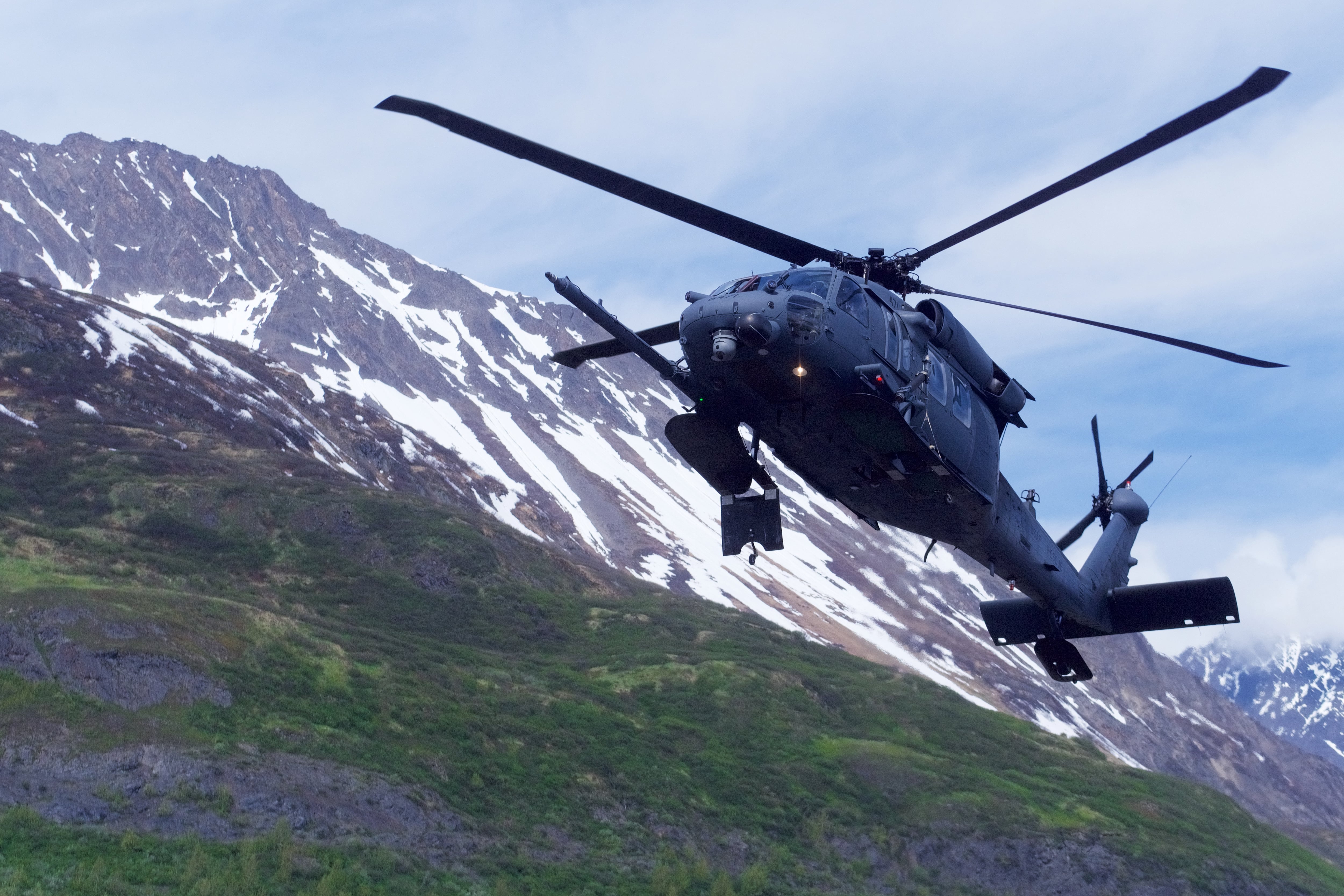The hunter was only about six miles north of Anchorage when he fell, but the 100-foot drop had stranded him at the bottom of a cliff with badly broken vertebrae and a traumatic brain injury. Night was closing in when he and his hunting partner used a satellite device to contact the Alaska State Troopers.
Operators at the Alaska Rescue Coordination Center received the call and quickly notified on-duty pilots and pararescuemen from the Alaska Air National Guard of the situation: one patient, critical condition.
To an outside observer, the mission might have seemed simple; it was less than a 20-minute flight to the patient. But Senior Master Sgt. Evan Budd of the RCC knew that in a state with more than 57 million acres of wilderness, things are rarely as easy as they seem.
“Alaska just makes everything challenging. It’s beautiful, but it’s one of the most dangerous places you can live in terms of weather, geographic features and animals,” Budd said.
The weather was relatively calm when an HH-60G Pave Hawk carrying two pararescueme,n, or PJs, took off from Joint Base Elmendorf-Richardson in Anchorage. But by the time they reached the steep mountain valley where the hunter was located, winds were howling.
Rain and gusts upwards of 60 mph made the skies too turbulent for a standard hoist rescue, and visibility was low. Instead of lowering PJs to retrieve the hunter, the helicopter had to land on a river sandbar, at which point the PJs set off on foot.
After crossing the Eagle River and traveling 500 meters in steep, mountainous terrain while carrying 100 pounds of medical gear, rescuers located the hunter, stabilized him, and carefully loaded him onto a litter to be carried back. Meanwhile, the helicopter had returned to JBER to retrieve another PJ who could assist in the efforts.
The team set up a rappel system to lower the patient down the mountainside — a nearly 300-foot descent. When they reached the bottom, PJs picked up the 6-foot-5, 265-pound hunter and waded through the cold waters that had risen to chest level since their first crossing.
The HH-60 safely delivered the hunter to Providence Alaska Medical Center on what may have been the worst day of his life. For the men and women of the 176th Wing, it was just another day on the job.
In the almost 30 years since assuming search and rescue alert in Alaska, the 176th Wing has performed more than 2,000 civilian search and rescues and is credited with saving more than 1,750 lives.
Referred to as Alaska’s “rescue triad,” the 176th Wing’s rescue component consists of three squadrons, each providing a necessary element for search and rescue operations. The 210th, 211th and 212th Rescue squadrons bring to the fight six HH-60 Pave Hawk helicopters, four HC-130 Combat King II fixed wing aircraft, and 55 qualified pararescuemen and combat rescue officers.
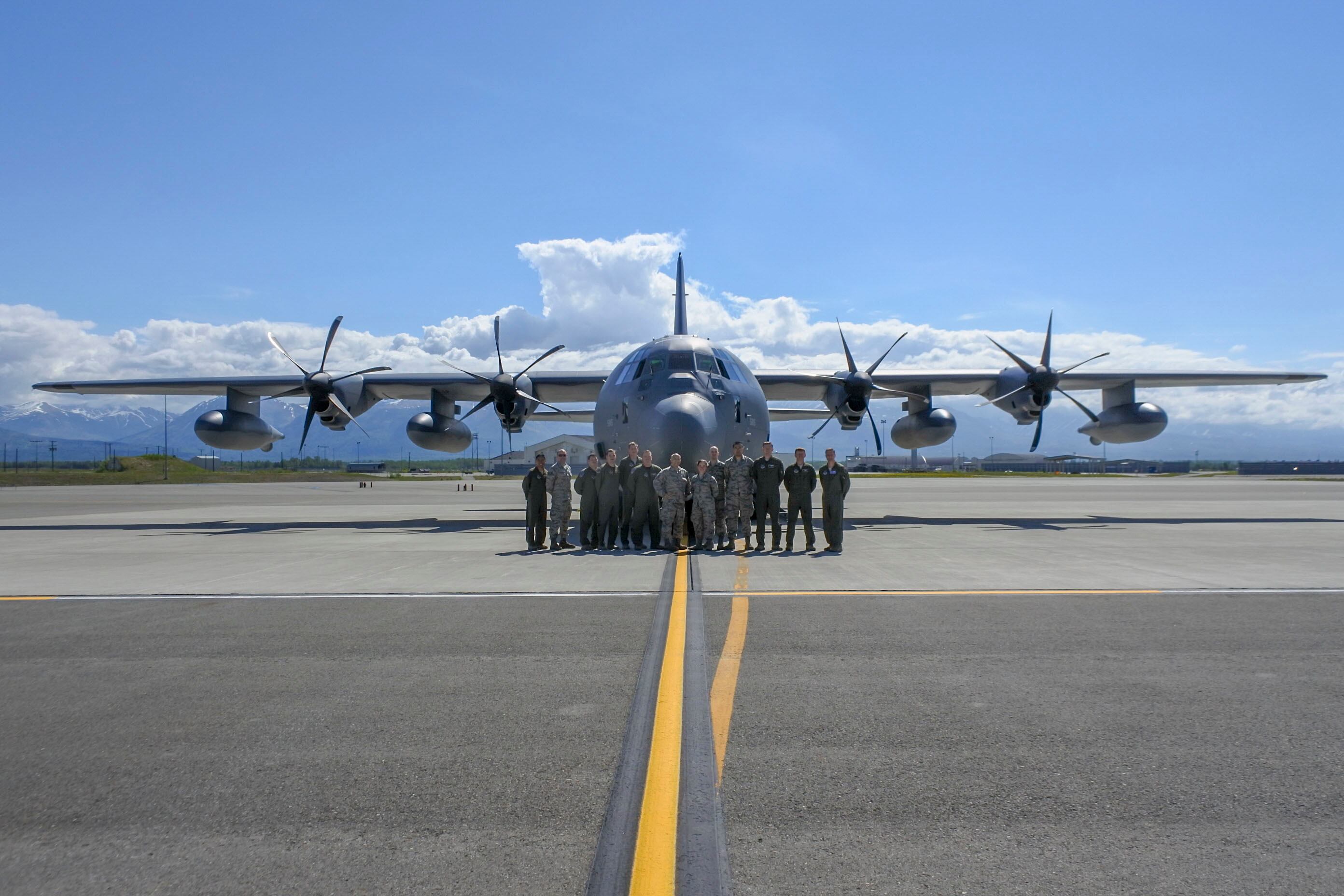
“You almost need one [type of aircraft] with the other," said Chief Master Sgt. Eric Chester, who oversees maintenance of the rescue squadrons' airframes. "The HH-60 is not capable of doing everything it can do without the HC-130 by its side.”
The HH-60 and HC-130 pairing, unique to Air Force rescue units, enables PJs to save lives across the state and, in wartime, across the battlefield. By providing in-air refueling capabilities, HC-130s can extend the range of drogue-equipped helicopters by hundreds of miles, something Lt. Col. Jeremy Groat, commander of the 210th Rescue Squadron, says only PJs and the Army’s 160th Special Operations Aviation Regiment have the ability to do.
“For long-range search and rescue missions out over the ocean, the Coast Guard does most of the things close to the coast, but if they’re far enough out there, we’re the only ones who can go out there with a vertical lift platform and execute pickups,” said Groat.
Although long-range sea rescues are uncommon for the 176th, long-range rescues themselves are not.
ln a state with as much undeveloped land as Alaska has, many of the missions the rescue triad undertakes are hundreds of miles over land. To add to difficulties, approximately 82 percent of Alaskan communities aren’t served by roads and have no connection to the contiguous road system, according to the Alaska Department of Transportation.
As a result, air travel is one of the most common means of transportation in the state, with the DOT reporting six times the pilots and 16 times the aircraft per capita compared to the rest of the U.S.
The combination of aircraft prevalence and Alaska’s uniquely bad weather means it’s far from uncommon for rescue operators to respond to calls of downed planes. Fortunately, improvements in emergency locator transmitter technology over the past decade have made locating distressed aircraft much easier. “It takes the search out of search and rescue,” said Groat, referring to ELT 406 locator systems.
Whiteout snowstorms, gusting winds, freezing temperatures and turbulence are dangers present across the state at different times of year, and new weather can appear and disappear abruptly. On long-range flights, it’s not uncommon to travel through completely separate weather systems.
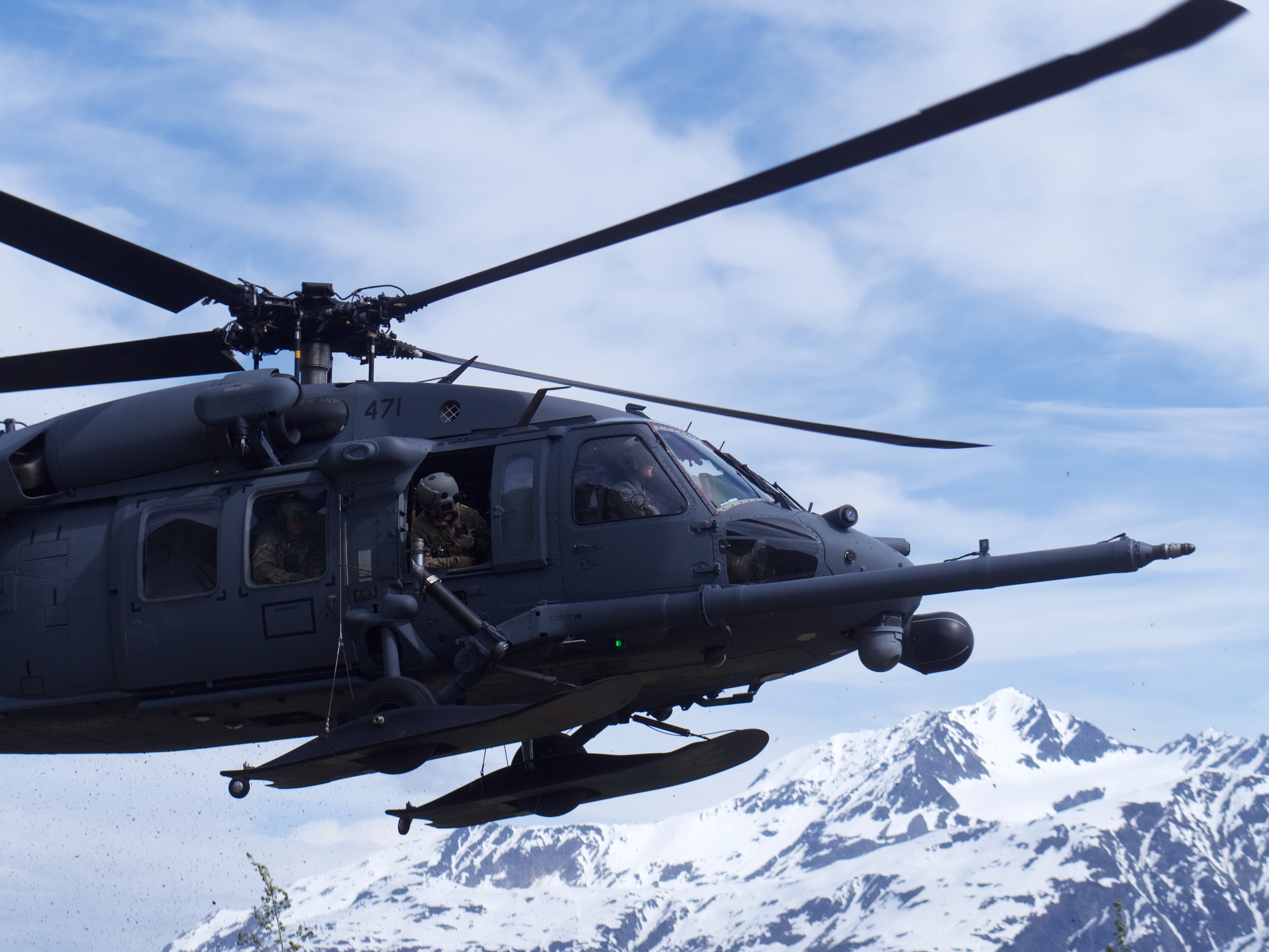
“You have a lot of people flying and we have very severe weather conditions,” said Lt. Col. Michele Edwards, commander of the Alaska Army National Guard’s 1st Battalion, 207th Aviation Regiment.
Edwards compared the four-hour flight from Anchorage to Bethel with flying from Oklahoma to Minnesota, only with worse weather.
To deal with Alaska’s extreme conditions, the rescue triad is equipped with a range of specialized gear.
“We configure our aircraft in Alaska a little bit different than the lower 48, just due to the environment,” Chester said. “We install skis on the aircraft and we have different tow plates we have to install for the ski mods. That takes a couple days to accomplish.”
Skis grant rescue pilots the ability to land in softer snow or marshy ground, two landscapes common in the Alaskan wilderness, Groat said. In wintertime, crews flush and refill each helicopter with thinner oil, so that gears remain lubricated even in extreme temperatures.
Individual PJs and CROs are also outfitted with unique gear including snow shoes, ice axes and climbing equipment for glacial rescues, tough winter boots, and dry suits to provide a warmer alternative to the typical wetsuits used for diving.
Because of the dangers posed by Alaska’s bone-chilling water temperatures, rescue operators will occasionally be tasked with using dry suits to recover drowning victims from the bottom of frigid bodies of water, said Maj. Brock Roden, an experienced CRO with the 212th Rescue Squadron.
He recalled a specific mission a few years earlier in which the 212th’s special capabilities were required to successfully recover the remains of a drowning victim.
“They were on a lake, I wanna say it was in the summertime, and they fell out of the boat and started swimming back to the shore,” he said. “But because the water was so cold, their muscles seized up and they drowned.”
When other search and rescue divers were unable to locate the swimmer’s body, they called in the PJs. Using sonar location technology, dry suits and additional information about the incident, the skilled search and rescue operators determined an area of interest and dove down, eventually locating the body and bringing it back to the surface.
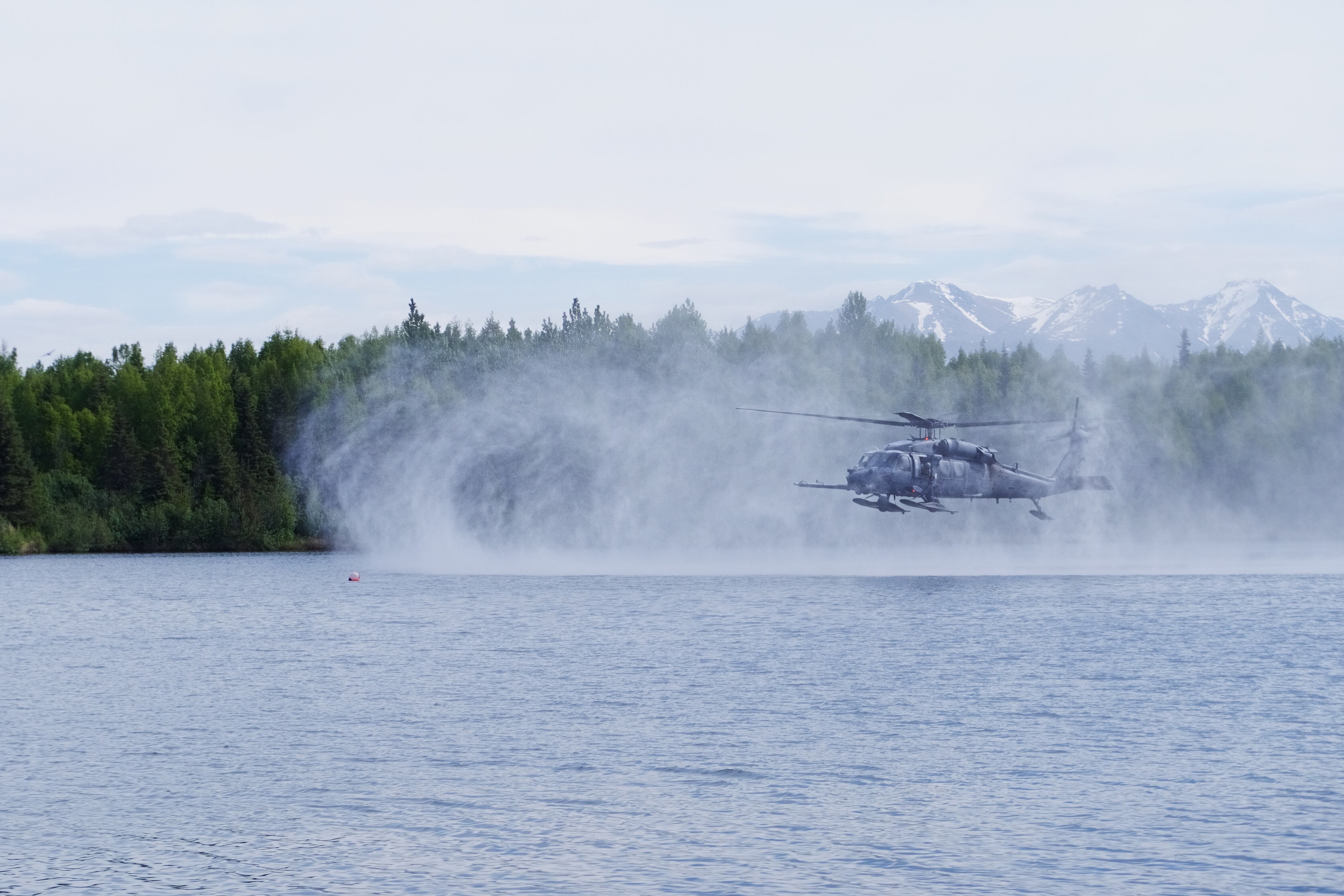
Beyond the dangers of cold weather, remote locations and flying, Alaska’s terrain and wildlife can also prove deadly.
When a hunter was mauled by a grizzly bear just after midnight on June 10, 2019, time was of the essence. Nearly 400 miles from JBER and rapidly losing blood, the hunter might not have lived long enough for PJs to deploy from HH-60 Pave Hawks, as they would in a standard rescue. The combat rescue officer on duty requested permission for PJs to parachute in from an HC-130.
Capable of speeds topping 350 mph, the 211th Rescue Squadron’s HC-130s do more than just refuel helicopters in air. The modified transport airframe is the Air Force’s only dedicated fixed-wing personnel recovery platform and can be used to drop rescue bundles, locate missing personnel and drop in rescuers.
For the pararescuemen stationed at JBER, jump missions are something of a rarity. PJs maintain proficiency in high altitude and static line parachuting, but because helicopter hoists are needed to extract patients and rescuers anyway, HH-60 hoists are the rescue triad’s typical method of infiltration for civil search and rescue.
The jump to save the mauling victim was the 212th’s first in five years, Senior Master Sgt. Jeremy Diola, one of the PJs on board the HC-130 that night, told Air Force Times. Diola estimated that the 212th normally gets one or two jump missions per year.
With 12 deployments over his 22 years of service, including at least seven to combat zones, the former Marine scout sniper has seen the world but is happy to call Alaska his home. Using phrases like “the pinnacle of DoD rescue” and “rescue wonderland” to describe the state, Diola said he felt Alaska’s call for years before he decided to make the move. The evening of June 10 would only serve to reinforce his love for the wilderness and his job.
“It’s a team sport — always has been, always will be, and that’s what I love about it.”
— Senior Master Sgt. Jeremy Diola
Diola and fellow PJ Master Sgt. Cody Inman exited the plane in the early hours of the morning, steering their parachutes to a landing approximately 600 meters from the mauled hunter’s location. Opting to use a combat systems operator-directed release rather than a computer-calculated drop, the rescuers shaved nearly half an hour from their arrival time.
When they reached the ground, the PJs were alert. It may have been just a civil search and rescue operation, but there was a wounded and angry bear out there somewhere. The men carried a shotgun for self-defense.
By the time Diola and Inman reached the patient, he had lost significant amounts of blood, and his wounds required urgent surgical attention. Over the next 30 minutes, the PJs provided blood transfusions and painkillers while preparing the patient to be hoisted into the arriving HH-60.
Once in the air, the rescue triad’s many moving parts again came to the patient’s aid. The HH-60 carrying the hunter made a half-hour flight to the nearest HC-130 landing zone, where one of the 210th’s fixed-wing rescue aircraft waited to quickly transport the patient back to JBER.
Once at the base, the hunter was cross loaded onto an Army helicopter and brought to a trauma center in Providence, where he began his recovery.
For their efforts in saving the hunter’s life, rescuers were awarded the American Red Cross Rescue of the Year award, Budd said.

Diola attributes the rescue triad’s ability to succeed even in dire circumstances to the talent and hard work of the many people contributing to rescue missions, from supply specialists and repairmen to the pilots and PJs themselves.
“The people supporting this search and rescue in Alaska … are just incredible people,” said Diola. “It’s a team sport — always has been, always will be, and that’s what I love about it.”
Challenging preparation
That focus on teamwork is a mindset engrained in PJs throughout the years of extensive training they must complete to become qualified to save lives in combat zones and civil search and rescue missions around the world.
The Air Force’s pararescue training pipeline begins with eight weeks of Basic Military Training and eight weeks of the Special Warfare Preparatory Course. That’s when the real challenge begins. Following SWPC, candidates must prove their worth at a four-week Special Warfare Assessment and Selection Course (formerly referred to as Pararescue Indoctrination). The course is a grueling test of physical and mental stamina, including continuous swimming, water confidence, running, rucking and calisthenics.
If candidates survive the gauntlet of SWASC, they will begin the long road to learning all the skills required of a pararescueman, including combat diver training; Army Airborne School; skydiving training at the Military Freefall School; SERE (Survival, Evasion, Resistance and Escape) School; EMT and paramedic schools; and finally, a 22-week pararescue apprenticeship.
Diola says the pipeline took him nearly three years to complete, since school slots weren’t immediately available.
As a combat rescue officer, Roden didn’t have to attend paramedic training, only an EMT basic course. He emphasized the importance of mastering the various schools that pararescuemen attend because they’re “basically modes of transportation to patient” that enable PJs to provide the advanced technical rescue capabilities for which they are known.
For Roden, one of the most challenging parts of the training pipeline was “stress inoculation,” which he described as “packing stress and stress and stress on an individual so they grow accustomed to it.”
“At the end of your training, if you go into a combat zone and you get into a sticky situation where there’s all these stressful events — gunfire, explosions, whatever — you’re already kind of used to the stress,” he said.
“If the phone’s ringing, someone else is on the other end having the worst day of their life. It motivates you to get up and get going.”
— Lt. Col. Patrick McBride
Stress is part of the job
Even without the stressors of combat, members of the 176th Wing’s rescue component face austere environments every time they go out on a mission. Some simplified the situation to say that the only real difference between civil and combat operations is “whether or not bullets are flying when you’re doing your job.”
Of course, most deployments don’t involve grizzly bears lurking nearby.
As members of the Air National Guard, the 176th Wing regularly rotates personnel through overseas deployments as part of their federal mission, often placing added stress on personnel left to work the unit’s state mission of civil search and rescue.
In June, for example, elements of the 176th deployed to provide combat search and rescue capabilities to U.S. Africa Command, which counters transnational threats and militant extremists, strengthens partner nations' security forces, and responds to crises to promote regional security and stability.
“Obviously our mission here doesn’t go away, even when we’re deployed," said Lt. Col. Patrick McBride, commander of the 211th Rescue Squadron. "We deployed last year; we have two of the squadrons deployed right now. So that doesn’t take everyone away, but it takes a good chunk away.
“We kind of get pulled in both directions.”
When the phone rings
Even on a good day, the job of providing search and rescue assets at a moment’s notice is still demanding. “It can be tough if you’ve been up and working all day, and then you crawl into bed and then the phone rings, and that starts your 16-hour day,” McBride said.
But overwhelmingly, the rescue professionals of the 176th said the demands are well-worth the reward of saving lives. “If the phone’s ringing, someone else is on the other end having the worst day of their life. It motivates you to get up and get going,” said McBride.
Initially receiving that phone call and ensuring rescuers know where to go are the rescue specialists at the Alaska Rescue Coordination Center. Tasked with dispatching rescue operators for almost the entirety of the state, the RCC is at the heart of it all.
“Our mission here at the RCC is to provide 24/7, 365, civil aeronautical search and rescue to inland Alaska,” Budd, the RCC’s superintendent, told Air Force Times.
But the coordination center doesn’t just provide information and guidance to members of the 176th Wing. RCC operators also support agencies including the Alaska State Troopers, the National Park Service and the U.S. Coast Guard.
The responsibilities of the center’s personnel go far beyond that of typical 911 dispatchers, however.
“We do that emergency dispatching piece," Budd said, "but what we also do is the search operations planning and managing the actual execution of the mission.”
Rescue coordinators at the RCC determine search grids, run probability models, evaluate weather patterns, and communicate with the pilots and pararescuemen on the ground to ensure mission success.
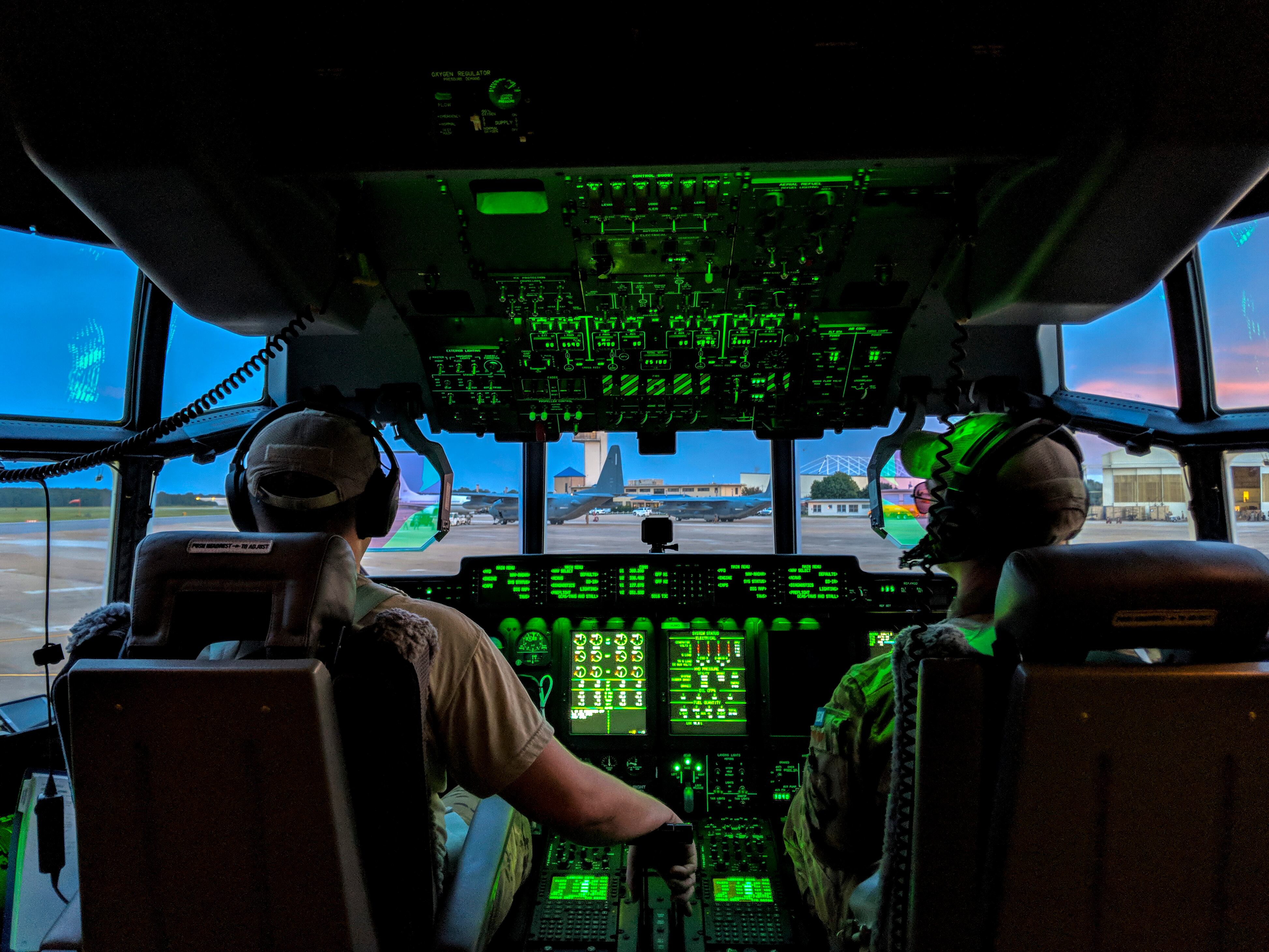
As of September, the RCC had received 434 incident calls this year, resulting in 100 missions. Operators carefully vet each call to determine whether or not the situation is critical enough to necessitate sending out rescue assets.
“What we really like to do when we take a mission is not only just get assets out there to get the guy and get him back, but we like to get assets out there who have the ability to provide the initial triage of the patient, stabilize them, provide the tech rescue if needed … and then get them to a higher level of care,” said Budd. “That capability in Alaska really only exists with the 176th Wing.”
Edwards emphasized that the National Guard’s rescue capabilities truly exist for emergencies in which they are the only option. “We are never taking away work for civilian air ambulance companies. This is only when there are no other assets available that we’re available to support the state,” she said.
Into the storm
When a villager in the small eastern Alaska community of Mertarvik began experiencing difficulty breathing and chest pains last December, that was exactly the case. Winds were high, and the snowstorm blowing through the area created near-whiteout conditions. Civil air ambulances couldn’t make it through to the patient, so the 176th was tasked with the mission.
Roden, who was the on-duty search and rescue officer at the time of the incident, recalled there being uncertainty about the severity of the villager’s condition. Commanders didn’t want to risk sending aircraft hundreds of miles out in the middle of a storm unless it was absolutely necessary.
“As time continued to pass. the medical situation seemed to start deteriorating," Roden said. "So, once it deteriorated past a certain point, I said ‘Alright, this is definitely a medical emergency now.”
The 176th dispatched an HH-60 for the rescue and an HC-130 to refuel it in transit. However, severe weather in a mountain pass forced the helicopter to turn back.
The HC-130 powered on, flying higher and faster than the helicopter until it arrived over Mertarvik.
“What made that challenging, too, was there was a small weather window where it was clear enough for them to drop, however it was getting to the end of the day and the daylight was disappearing,” Roden said. “It was a really complex mission.”
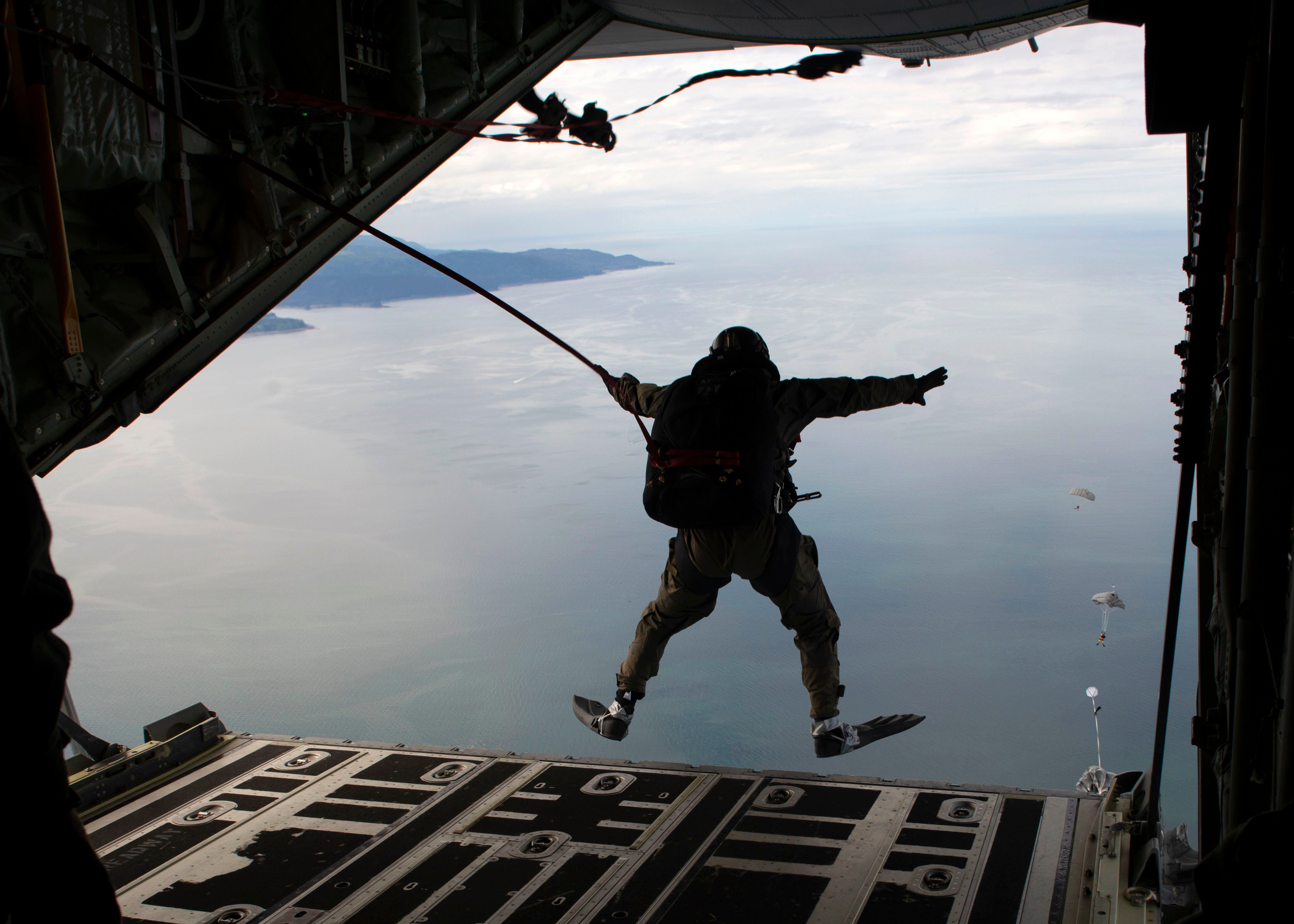
Master Sgt. Jeremy Maddamma of the 212th Rescue Squadron was on board the HC-130 when the decision was made that he and another pararescueman would jump into Mertarvik to assist the patient.
“The reason people make such a big deal out of jump missions is because they’re so few and far between,” Maddamma said. But despite the harsh weather conditions and disappearing daylight, he recalled being calm and prepared for the task at hand.
“What’s going through my mind is jumpmaster duties — everything I’ve been trained to do: good communication with the air crew; good communication with my teammate; and getting us on the ground safely,” he said.
The HC-130′s loadmasters released a rescue bundle containing necessary equipment onto the landing strip of an airport below, where villagers recovered the supplies. The two rescuers then jumped from the plane and into the storm.
Earning the beret — every day
Maddamma had joined the Air Force right after graduating from high school in Cleveland, signing his first enlistment contract as a fireman. But deep down, the real reason he’d joined the Air Force was to become a PJ.
“When you’re going through the selection course, you think that what you’re doing is going to be the hard part. But as you continue to grow, what you realize is that earning your beret was actually the easiest part. It’s maintaining and wearing it every day that is where the real challenge comes in,” Maddamma said. “The beret doesn’t make the man; the man makes the beret.”
It’s his “never quit” attitude that Maddamma says carried him through selection and training, through 21 years of service, and back to working in rescue operations after losing his left leg to friendly fire injuries in Afghanistan in 2012.
In the years following his injury, Maddamma recovered at San Antonio Military Medical Center in Texas. “I tried for two-and-a-half years to keep my leg,” he said. But after 15 surgeries, bone infections, and nearly two years of wearing a frame on his leg, Maddamma volunteered for amputation.
Surgeons removed his leg in January 2015.
“The Air Force initially wanted to medically retire me, and I didn’t want that,” he said. “I believed that even if I couldn’t come back to full duty flying and jumping, that I would be able to teach or I would be able to instruct or do a lot of other things.”

With the support of squadron leadership, Maddamma was cleared to return to duty, where he still had to prove his ability to rappel, fast rope, jump and meet the physical requirements of the job. The experienced pararescueman spoke about the requirements as though they were the easy part, saying: “I did some refresher training, and then I was back in the saddle.”
And back in the saddle, or rather the parachute harness, Maddamma was.
On that snowy night over Mertarvik in December 2019, Maddamma glidedc through heavy winds over the icy river on the village’s edge before coming to a landing on the same airstrip where their medical supplies had been dropped earlier.
Villagers escorted the two rescuers to the home of the elderly man, experiencing what Maddamma described as “'cardiac issues.” The PJs provided care to the patient and began to stabilize his condition. Meanwhile, the storm raged.
“We stayed in the house for like 15 hours,” Maddamma said. When the weather finally cleared, a Blackhawk from the Army’s 207th Aviation Regiment retrieved the PJs and their patient and brought them safely to Bethel, where an HC-130 delivered the patient to a hospital.
Working in tandem
Working with Army National Guard assets to support rescues isn’t uncommon for the PJs, Roden said. “We’re not stingy in only using 176th Wing assets, so we’re happy to work with whoever will help us out.”
Members of the 207th provide aerial assets for a range of operations in Alaska, including counter-drug operations, casualty evacuation, and civil search and rescue.
In the past four years, 207th pilots have been tasked on 44 search and rescue and casualty evacuation missions across the state. What makes the air assets of the Alaska Army National Guard particularly useful is their unique posturing. In addition to their Anchorage facility, pilots and aircraft are stationed at remote facilities in Nome, Bethel, Juneau, and Fairbanks.
Last March, when three Iditarod racers and their teams became stuck on an ice floe in the middle of a bay near Nome, aviators from the 207th had a unique opportunity to demonstrate their skills.
“We were relatively close … and we were able to safely coordinate with the state troopers, with a ground snow machine search and rescue team, to get those three mushers off the ice, off the overflow, and get them to safety in Nome,” Edwards said.
All of the Army’s flight paramedics are nationally registered and critical care certified, said Staff Sgt. Mikana Halloran, one of the 207th’s primary flight paramedics. Their medical expertise and distribution throughout the state enable them to be dispatched by the RCC for cases of injured hikers, villagers in need of emergency medical transportation, and even rescuing large groups using CH-47 Chinooks, as they did last summer when a lodge housing more than 40 people was threatened by wildfires.
“PJs are really great at extraction, mountain rescue — you know, with ropes and hooks and all those things, whereas [Army flight paramedics] are more focused on patient care, so it works great in combo if there’s a technical rescue and then an injured patient,” said Halloran.
For the medevac specialists of the 207th, Halloran said, the state mission is great training for combat missions, where aviators and paramedics are expected to retrieve downed pilots or wounded service members from medevac zones on the battlefield.
“The best part of being in the Guard is being able to work in a state where you can support your state and still train for your federal mission,” said Edwards. “So all while we’re preparing for our federal mission, drill weekends, annual training, we’re called upon by our state to perform a variety of missions.”
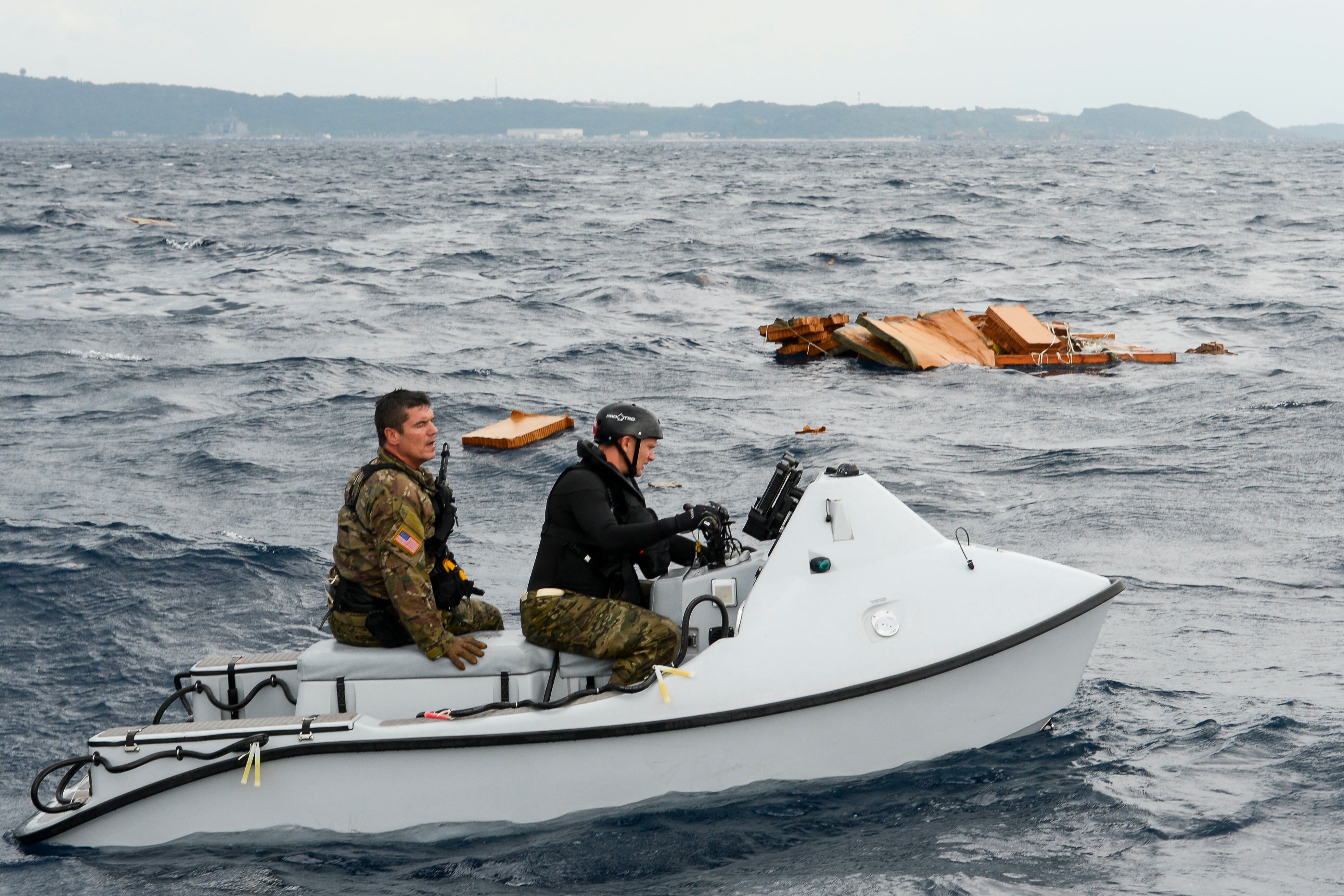
Going the distance
In addition to cooperating with members of the Army National Guard on rescues, Alaska’s PJs partner with the Air Force’s 144th Airlift Squadron to retrieve astronauts when NASA capsules land in the Pacific.
“We can take PJs and whatever cargo they need in the C-17 and we can fly a good distance — four hours, five hours out, search for somebody in the water, and then drop boats, drop jet skis, drop whatever they need,” said Lt. Col. Nathan Schauermann, commander of the 144th.
After a number of rescue incidents in the Pacific, Schauermann said, his squadron began planning for long-range rescues. When NASA’s request for trained personnel to support recovery assistance came along, the 144th’s existing plans only required slight adjustment to meet the requirements.
Though no astronaut capsules have yet required rescue in the Pacific and the C-17s of the 144th haven’t operationally deployed PJs, Schauermann said it’s a mission they’ve practiced many times and are fully prepared to execute.
To remain prepared to execute their own full mission set, the 210th and 211th Rescue Squadrons require significant maintenance support. Chester, whose airmen ensure the aircraft are ready to fly, estimated that it takes about 30 hours of maintenance for every hour of flight time.
As HH-60 airframes age, keeping up with maintenance has only gotten more difficult, Chester said. Small upgrades like removing old wiring or replacing blade tips can help keep the helicopters in the air, but when frame beams crack, an issue Chester said has become more common in recent years, it can take weeks to repair.
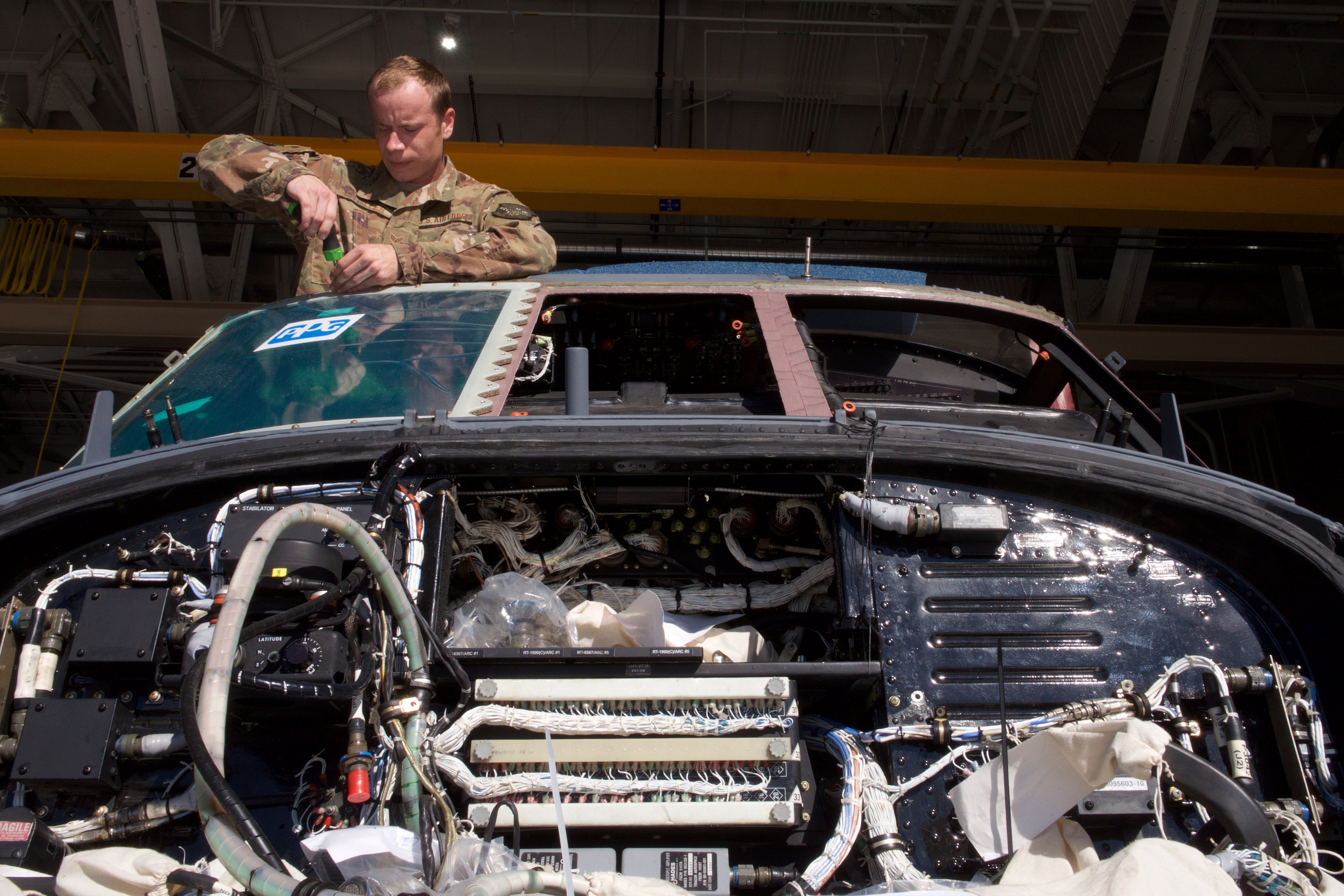
To stem the loss of working Pave Hawks, the 176th has begun replacing its current squadron with operational loss replacement models purchased and rebuilt from the Army’s UH-60 fleet. To date, five of the six legacy models have been replaced with OLR HH-60s, Chester said. He hopes to add two more OLR tails to the mix in the near future.
In the long term, however, the 210th hopes to one day use Sikorsky’s new HH-60W Jolly Green II, named for its Vietnam-era predecessor, affectionately known as the Jolly Green Giant for its distinctive paint scheme. The HH-60W began testing earlier this year.
When asked what they’d change about the rescue environment in Alaska, personnel from across the rescue triad were hesitant in their responses. Chester said more equipment and maintenance specialists would ease the workload, and others expressed the difficulties of being stretched thin when portions of a squadron are deployed overseas or there aren’t enough support personnel to go around.
Overwhelmingly, however, the rescue professionals of Alaska’s 176th Wing said that they wouldn’t change jobs for the world. What they do every day is about the lives they save and the people with whom they work.
“These things we do,” the Air Force pararescue motto goes, “that others may live.”
Harm Venhuizen is an editorial intern at Military Times. He is studying political science and philosophy at Calvin University, where he's also in the Army ROTC program.
